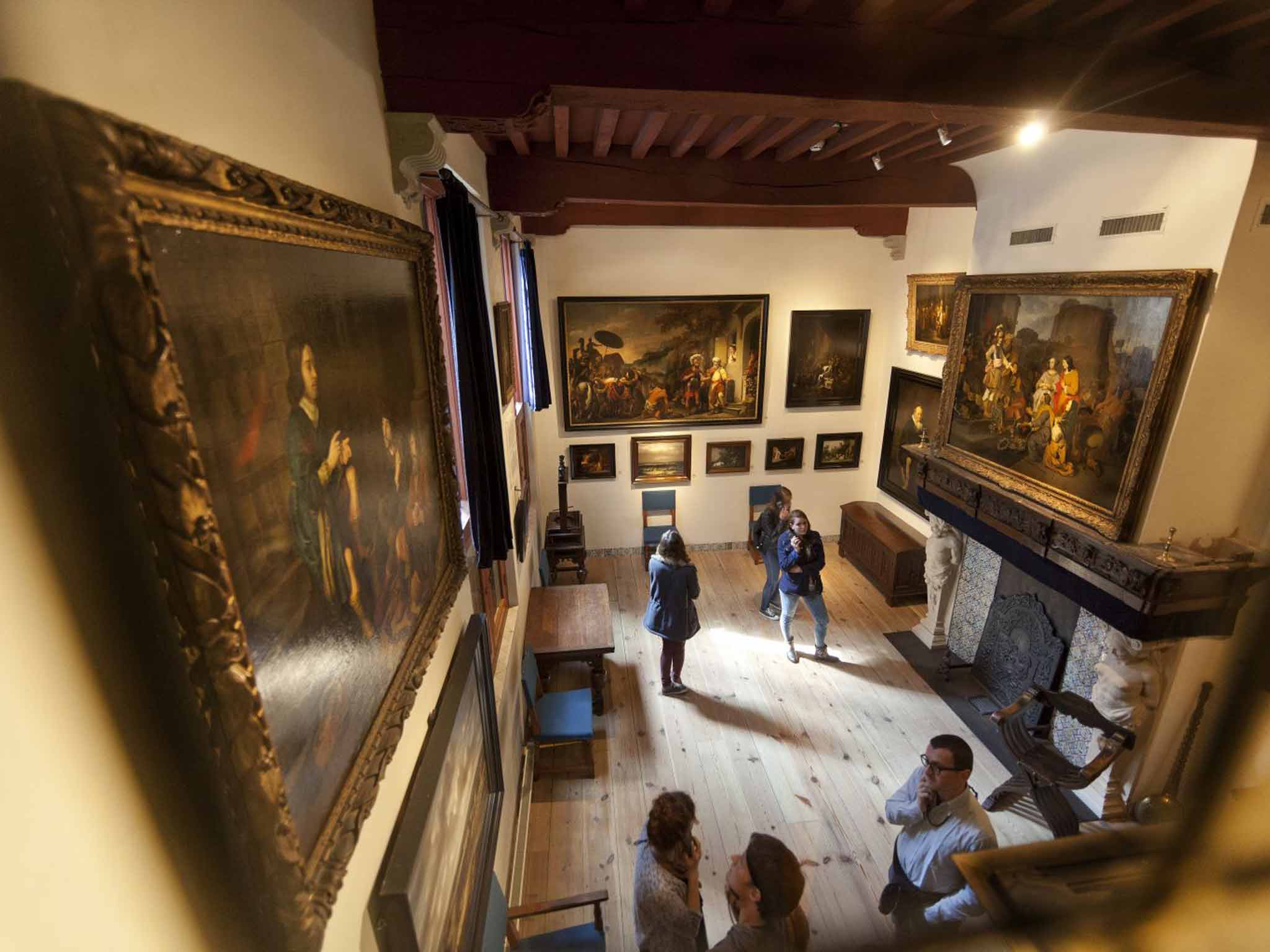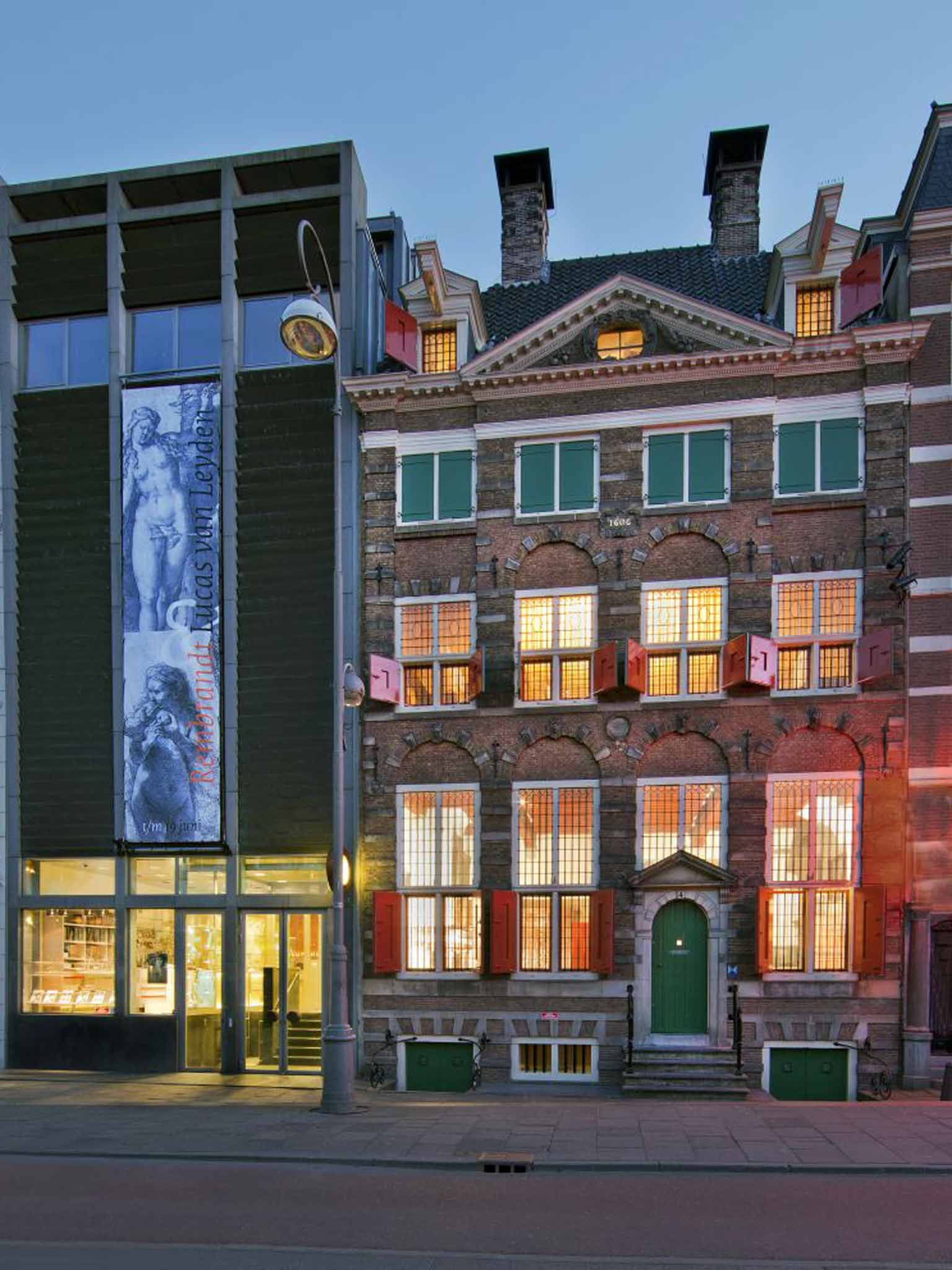The Independent's journalism is supported by our readers. When you purchase through links on our site, we may earn commission.
Amsterdam: On the road with Rembrandt
As the National Gallery opens a major exhibition, Jonathan Lorie travels to the Old Master's home

Your support helps us to tell the story
From reproductive rights to climate change to Big Tech, The Independent is on the ground when the story is developing. Whether it's investigating the financials of Elon Musk's pro-Trump PAC or producing our latest documentary, 'The A Word', which shines a light on the American women fighting for reproductive rights, we know how important it is to parse out the facts from the messaging.
At such a critical moment in US history, we need reporters on the ground. Your donation allows us to keep sending journalists to speak to both sides of the story.
The Independent is trusted by Americans across the entire political spectrum. And unlike many other quality news outlets, we choose not to lock Americans out of our reporting and analysis with paywalls. We believe quality journalism should be available to everyone, paid for by those who can afford it.
Your support makes all the difference.'It's like getting to know Rembrandt as a friend," whispers Celeste as she smears black ink across the fine lines of the copper plate. "People come here and watch me making these prints and sometimes they cry." Autumn light falls through a leaded window into the room where the master once worked. "I think it's because he put so much emotion into his pictures."
She cranks the plate through a wooden printing press where it bites into a sheet of creamy paper. When we peel them apart, what I'm holding in my hand is the closest thing I will ever get to owning a Rembrandt etching. Out of the page stares a portrait of his wife, Saskia, a curly-haired woman in the second year of their marriage, with a quiet smile and patient eyes. It is signed and dated 1636.
We are standing in Amsterdam's Rembrandt House Museum – the actual house where the couple lived in his heyday as a fashionable painter of the Dutch Golden Age. I have come here to explore his world, as a major exhibition of his later works opens at the National Gallery in London. And you can't get any closer to the great man than wandering the 17th-century rooms of his home.
I am shown around by the curator, Dr David de Witt. The house has been furnished to resemble how it was in Rembrandt's time, based on a list of his possessions. At the front is a grand room where he displayed and sold paintings. Upstairs is his studio, the bare boards that he paced while painting, the windows that lit his easel. In the archive David unwraps a copper plate. "This is the original," he smiles, "etched by Rembrandt himself. The one we use downstairs is a cast made from this." Out of the centuries-old metal glances the gentle face of Saskia.

I thank David and wander out, dazzled. Down the street is another Rembrandt landmark – De Waag, a turreted medieval gatehouse where he painted his first great commission, The Anatomy Lesson of Dr Nicolaes Tulp. These days there's a stylish restaurant beneath the beams of the tower and I decide to try a classic Amsterdam drink, Jenever. This was the spirit carried in the ships of the Dutch East India Company as they traded spices from the Far East to Europe, creating the wealth of the Golden Age. "Jenever" gave rise to our "gin" – a poor copy, the barman says as he pours out thimbles of firewater. One bottle is labelled "Rembrandt". Several flavours later I lurch up the tower stairs, where the barman says the anatomy theatre still exists: but I find that the door at the top is locked.
Instead, I head for the safety of my hotel: the Waldorf Astoria, an elegant conflation of six houses along a 17th-century canal. Outside, motorboats glide past filled with people sipping evening drinks. Inside there's a grand staircase, a garden with a Baroque summerhouse, a jade-green swimming pool, and a restaurant that deserves a star in next year's lists.
The best place in the world to see Rembrandts is the Rijksmuseum, and this is where I go the next morning. After a 10-year refurbishment, it's a lovely airy space where the Golden Age painters have pride of place. A wall of Vermeers portrays everyday life in houses like Rembrandt's, and two glorious Pieter de Hoochs show Amsterdam's newly built canals and newly rich merchants.
At the top is Rembrandt's grandest painting, The Night Watch, a huge commission from a city militia. But more interesting to me is a room of early Rembrandt oils – including one of the first of his self-portraits. The 22-year-old hopeful peers out from a bundle of curly hair, his face as yet unlined.
I walk out through a street of art galleries to the Jordaan – the area where Rembrandt lived after selling the museum house to pay off debts. His life was a roller coaster – from miller's son to famous painter and then bankruptcy due to an extravagant lifestyle and changes in artistic taste. By then, Saskia had died of tuberculosis and three of their children had perished. No wonder the great series of self-portraits shows him ageing so magnificently. No wonder his final works contain such profound humanity, such searing honesty. He was the master of dark and light and, even in his impoverished final years, he was visited by a Medici prince, so great was his reputation.
The Jordaan is a modest district that is calmer than the grand canals. Rembrandt's final home no longer stands, but the area's brick-paved streets still host traditional cafés, its railings are lined with bikes, and I find a heron perched on the houseboat I will be sleeping in tonight.
The windows of the boat open to the glinting canal, bringing me close to the water that brought wealth into this city. On the far bank is the Westerkerk, a Renaissance church where Rembrandt was buried in 1669 – in a pauper's unmarked grave. Today, there's a simple plaque, copied from a sign in The Night Watch.
My final stop, for a little light relief, is the Five Flies – a restaurant that's a monument to the Golden Age. If you want to step inside those Dutch paintings of townsfolk enjoying a banquet, this is the place. Its ancient rooms are lined with old tiles and gilded leather, lit by flickering chandeliers. The food is like the decor – traditional Dutch – with a modern twist and a fabulous touch. Many of the chairs carry brass plaques recording famous visitors, from Orson Welles to Jean Cocteau, Gary Cooper to Mick Jagger.
I sit in the Rembrandt Room, where the waiter points to the wall above my head. Hanging there is an etching – an original – that I recognise. Nearly four centuries ago it was printed in the artist's house across town, from that copper plate in the archive. Astonishingly, it is Rembrandt's portrait of Saskia, full of the promise of their youth. I raise a glass to them both.
Getting there
You can fly to Amsterdam from many UK airports; easyJet and KLM offer the widest choice of departure points. By sea, Stena sails from Harwich to Hook of Holland and P&O Ferries from Hull to Rotterdam.
Jonathan Lorie travelled with Art Tours (020 7449 9707; arttoursltd.com), which creates private and group tours in Amsterdam and beyond with expert lecturers and private access. A long weekend at a five-star hotel in Amsterdam starts at £2,300pp including flights, transfers, accommodation and guiding.
Staying there
The Waldorf Astoria Amsterdam (00 31 20 718 4600; waldorfastoria.com/amsterdam) has doubles from €426 a night, excluding breakfast. Frederic Rent A Bike & Apartments (00 31 20 62 45 509; frederic.nl) hires out antique houseboats from €138 a night for two people, and canal-house apartments from €132 a night
More information
Rembrandt: The Late Works is on at the National Gallery, London, from 15 October to 18 January (nationalgallery.org.uk).
Join our commenting forum
Join thought-provoking conversations, follow other Independent readers and see their replies
Comments